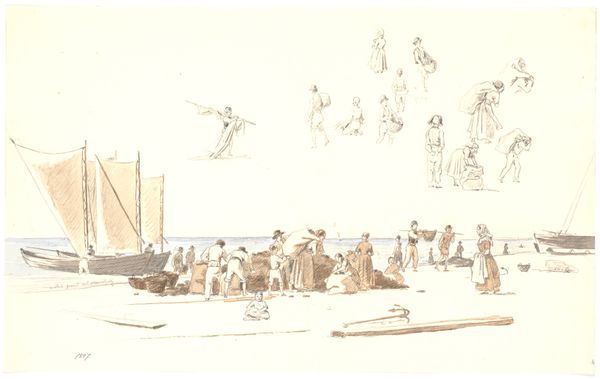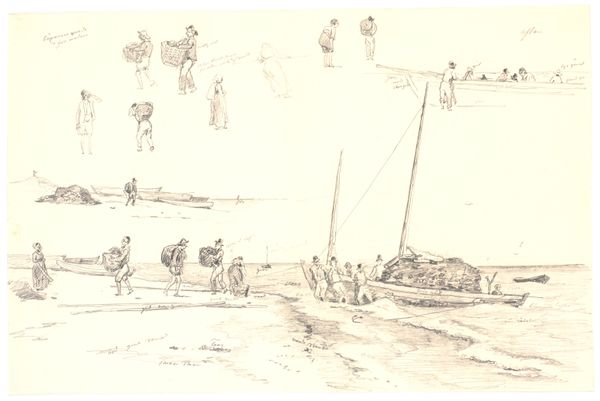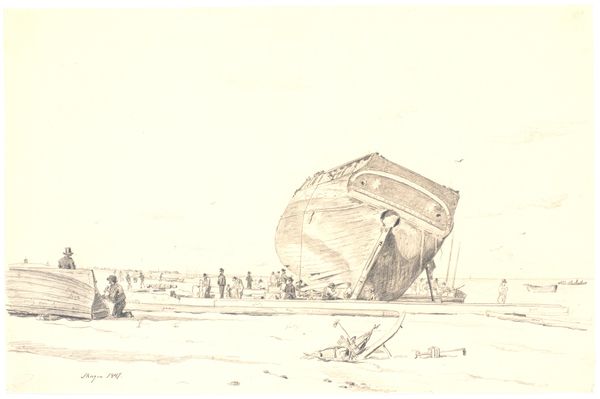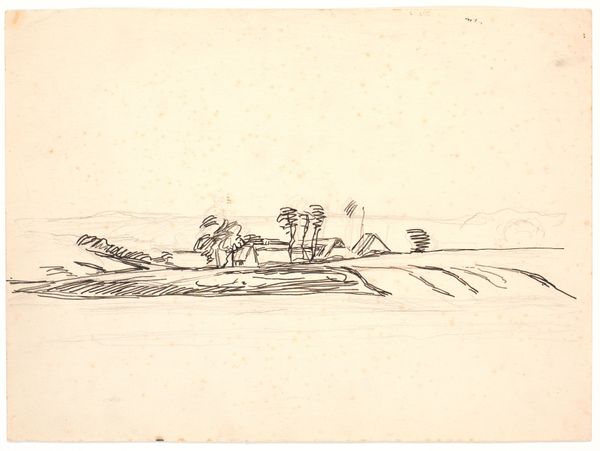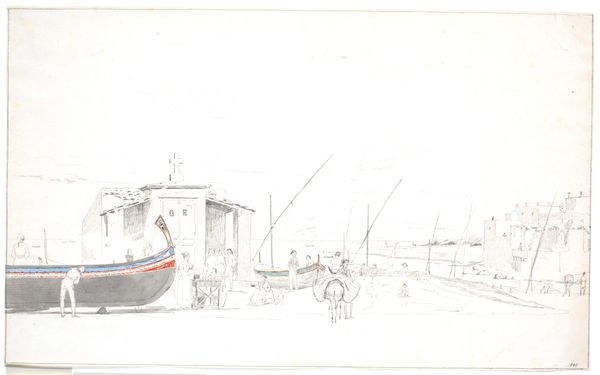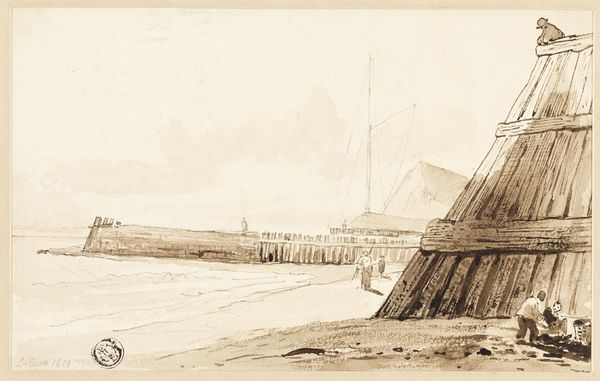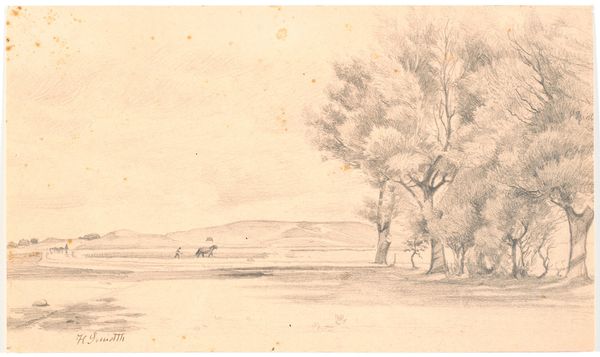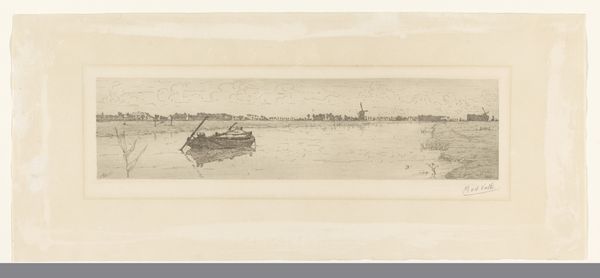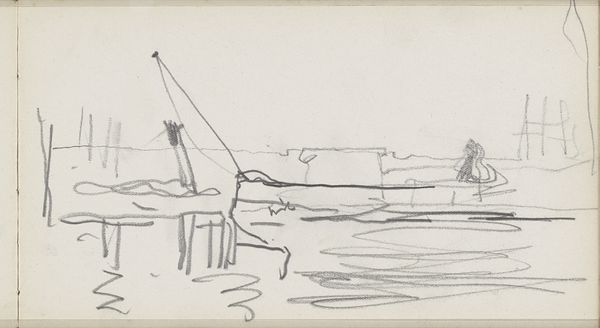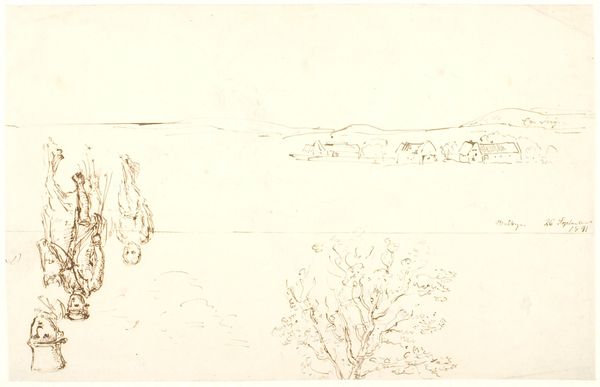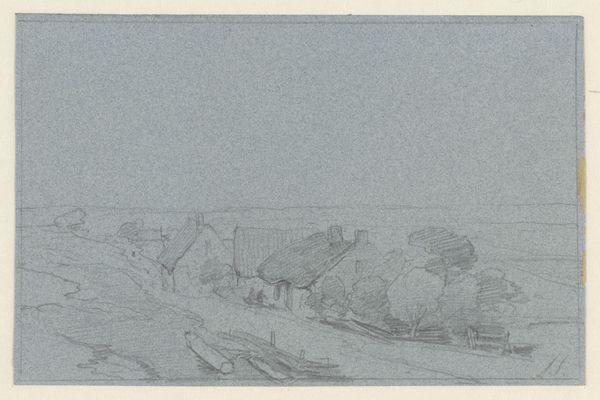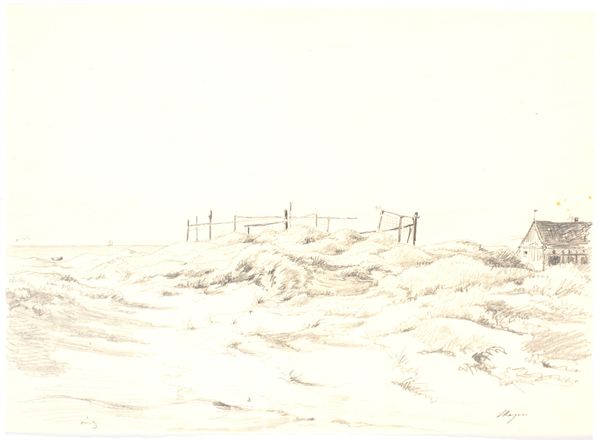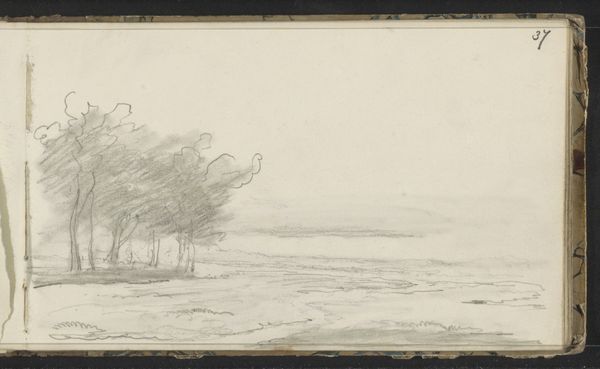
drawing, plein-air, pen
#
landscape illustration sketch
#
drawing
#
plein-air
#
landscape
#
figuration
#
romanticism
#
pen-ink sketch
#
sketchbook drawing
#
pen
#
genre-painting
Dimensions: 240 mm (height) x 303 mm (width) (bladmaal)
Curator: Here we have Martinus Rørbye's "Beach Scene with Inverted Boat and Two Fishermen," a pen drawing from 1833. It's currently held at the SMK, the National Gallery of Denmark. Editor: The stark simplicity! I'm immediately struck by the quiet stillness. It’s more of a mood than a picture. You can almost feel the cool, damp air of the beach and hear the silence punctuated by gentle lapping of waves. Curator: Exactly. Rørbye was a master of capturing the everyday. Note the use of pen work—such sparse but precise strokes. He created this drawing, plein-air, using only a pen. We can consider how Romanticism shaped this fascination with representing everyday life. Think about the fisherman—and those overturned boats that become their refuge. It focuses on the material conditions of their life: boats, nets, weather. Editor: Right, the inverted boat; it reminds me of a skeletal sea creature stranded on the shore. But the interesting question is: how are these people experiencing the scene that they depend on to make a living. Are they burdened, peaceful, reflective? Are they also seeing something extraordinary? What were their living conditions? It raises so many more questions. Curator: Absolutely. It makes one consider the contrast: The mundane task of fishing, versus Rørbye’s choice to render it with such delicacy. The drawing shows an artist’s labor through material rendering and a fisherman's profession in labor with his boat and equipment. Editor: There's an ambiguity about time too. The light is almost dreamlike—suggestive. It allows the imagination to drift and play with various narratives about people working to subsist from the ocean in what feels like another world or a vision. Curator: Yes, there is a deliberate slowing down embedded in this pen drawing which offers new perspective on those often ignored. Editor: Well, for me, I feel this subtle tension and then an opening, which just leaves me floating between two possible stories. I wonder, did Rørbye experience something similar when he stood there and felt a connection? It’s the space he created on paper with lines that I felt when I came here.
Comments
No comments
Be the first to comment and join the conversation on the ultimate creative platform.
